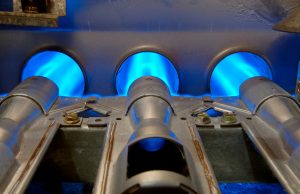Furnaces don’t last forever. Proper maintenance and care will extend a furnace’s life expectancy to (or sometimes slightly past) the usual limits, but all good things come to an end. Most furnaces typically last between 15 and 25 years, and understanding when to replace them is key to avoiding unexpected breakdowns and managing furnace replacement cost. Choosing a high efficiency model can also help lower your monthly utility bills, providing long-term savings in addition to reliable comfort.
When considering installation costs, it’s important to prioritize professional installation to ensure safety and performance. Installation quality directly affects how well your system operates. Professional heater installation and maintenance—whether for furnaces, boilers, or other heating units—are crucial for maximizing system efficiency and ensuring long-term performance. Once your new furnace is installed, ongoing maintenance and service are essential to maintain efficiency and comfort over time. Emergencies like total heat loss are prioritized for repairs by HVAC contractors, ensuring that critical heating issues are addressed promptly.
Replace or Repair? How to Decide for Your Furnace
- If a repair will cost 50% or more of the price of a new furnace, replacement is the smarter choice.
- Furnaces older than 15 years with frequent breakdowns are typically at the end of their lifespan.
- Rising energy bills, uneven heating, or loud, unusual noises are strong signs it’s time for a new unit.
The question is: how do you know when your Ferndale, WA furnace nears its final days without waiting for a complete breakdown?
Let’s help you find out. Our straightforward process starts with a professional assessment of your furnace’s condition, followed by clear recommendations to help the customer make an informed decision about whether to repair or replace.If a repair will cost 50% or more of the price of a new furnace, replacement is the smarter choice. Furnaces older than 15 years with frequent breakdowns are typically at the end of their lifespan. Rising energy bills, uneven heating, or loud, unusual noises are strong signs it’s time for a new unit.
The cost to replace a furnace can range anywhere from $3,800 to $10,000, depending on several factors such as the type of furnace, its size, and its efficiency rating. Average costs for furnace replacement are influenced by furnace cost, fuel type, furnace types (gas, electric, oil), and efficiency features. Installation costs, installation cost, and labor costs are significant contributors to the total expense, as they can vary based on the complexity of the job and regional rates. Additional costs and additional expenses, such as new ductwork, venting, or electrical upgrades, may also arise during installation. The total cost of furnace replacement includes all these factors, so it’s important to budget accordingly. When considering furnace replacement cost and furnace costs, be sure to account for every aspect of the project to avoid surprises.
When choosing a new furnace, consider how fuel type and furnace types impact both the initial investment and long-term operating costs. High efficiency models, such as those with AFUE ratings of 90% or higher, and an energy efficient furnace can offer long-term savings through reduced energy bills. Alternatively, a heat pump provides both heating and cooling, making it a versatile and energy-efficient option for many homes. Modern features like variable speed blowers and a secondary heat exchanger can further improve comfort and efficiency. Reputable brands, such as Carrier furnaces, are known for their reliability and performance. If your HVAC system includes an air conditioner, its efficiency rating will also affect your overall energy use and costs. For an in-depth look at how SEER2 standards impact energy savings, this guide on SEER2 efficiency improvements can help you better understand the benefits of updated systems. The need for new ductwork during installation can significantly impact the final price, so be sure to assess your current system. Professional installation is essential for safety, warranty protection, and optimal efficiency. Remember to consider other factors beyond price, such as advanced features and installation quality, when making your decision.
How much does a furnace cost to replace? Estimating this involves looking at all the factors above. While repairing an old unit may seem like the affordable option in the short term, replacement can be more cost-effective over the long run, especially as most furnaces approach the end of their lifespan.
Continue Reading
Tags: Furnace Replacement, Furnace Services
Posted in Furnace Replacement | Comments Off on When is it Time to Replace Your Furnace?


